Patrick Gouat
Maître de Conférences, retired |
 |
||
| En français ci-dessous | ||
Research |
My main scientific interest focuses on the adaptation of social behaviour, i.e. socio-spatial organization and communication, to environmental constraints. The impact of two main constraints has been studied independently in different clades of rodents: Arid environment in Ctenodactylids rodents in the Sahara region, and in Spermophilus Ictidomys species in the Bolson de Mapimi (Mexico); anthropogenic impact on environment and cultivated areas in Europe in mound-building mice and house mice. My research is based both on field studies and laboratory studies. |
|
Teaching |
I mainly teach in courses within the master program of ethology (general ethology, methodology in behavioural sciences, applied ethology, evolution of behaviour, behavioural ecology). I also teach human evolution in the Bachelor Degree of psychology. |
|
Curriculum vitae |
1976. Ms in Animal Biology, University Claude Bernard Lyon 1 |
|
| English version above | ||
Recherche |
Mon intérêt scientifique principal est l'étude de l'impact des contraintes environnementales sur le comportement social, organisation socio-spatiale et communication, chez différents clades de rongeurs. Deux types d'environnement ont été plus spécifiquement étudiés : d'une part les contraintes liées à l'aridité du milieu avec l'étude socioécologique des rongeurs Cténodactylidés du Sahara, et la comparaison de deux espèces de spermophiles du Bolson de Mapimi (Mexique); d'autre part les milieux anthropisés et les zones agricoles en Europe chez les souris domestiques et la souris glaneuse. Mes recherches se déroulent sur le terrain et en laboratoire. | |
Enseignement |
J'enseigne principalement dans le master Ethologie (éthologie générale, méthodologie en sciences du comportement, éthologie appliquée, évolution du comportement et écologie comportementale). Je donne aussi un cours sur l'évolution humaine en Licence 2 de Psychologie. |
|
Curriculum vitae |
1976. Maîtrise en Biologie Animale, Université Claude Bernard Lyon 1 |
|
Publications |
[list] | ||||
Images |
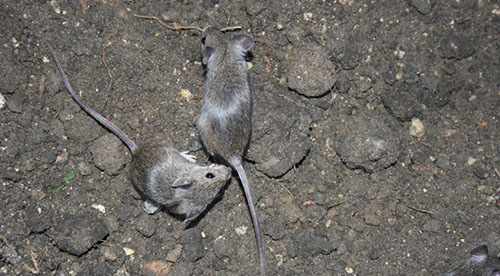 |
||||
Chemical communication in juvenile mound-building mice |
|||||
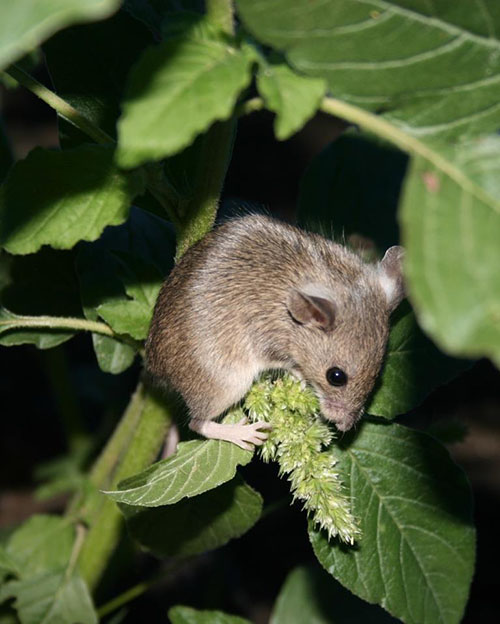 |
|||||
Juvenile mound building mouse picking plant material. |
|||||
 |
|||||
A typical mound showing tiles on the top and the mines all around (Gyöngyös region, Hungary) |
|||||
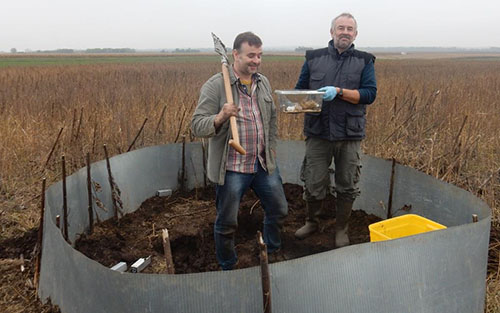 |
|||||
Mound building mice collection in Hungary. The mound is enclosed by a metallic fence, and the mound is dug out progressively following each tunnels. Mice are caught by hand. |
|||||
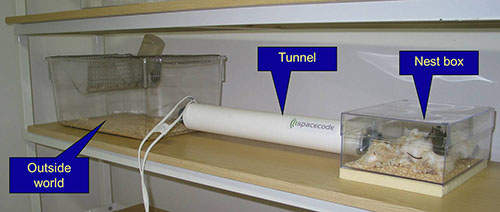 |
|||||
Experimental device used to evaluate the time spent by each individual inside the nest in mound building mice. The device encompassed a nest (usually covered by a cardboard box) and an external world containing food and water. A tunnel surrounded by a double RFID antenna joined the two compartments. Each individual had a RFID tag injected under the skin. A similar device was used to study the division of labor during the mound building process. In this case both animals and building material were identified by a RFID tag. (The development of this experimental device was funded by an ANR grant 05-BLAN-017701) Dispositif expérimental permettant de suivre automatiquement et en continu le déplacement de chaque individu. La version présentée a servi à étudier l'investissement parental chez la souris glaneuse. Elle comprend une boîte nid, habituellement recouverte d'un carton et un monde extérieur contenant eau et nourriture. Ces deux compartiments sont reliés par un tunnel muni d'une double antenne RFID permettant de détecter le passage et le sens de passage de chaque individu identifié par un puce RFID injectée en sous-cutanée. Une autre version du dispositif a été utilisée pour étudier la division du travail lors de la construction collective du tumulus. Dans ce cas les souris et chaque item de construction (tuile ou boule de coton) sont identifiés par des puces RFID. (Progamme SILLAGES ANR 05-BLAN-017701). |
|||||
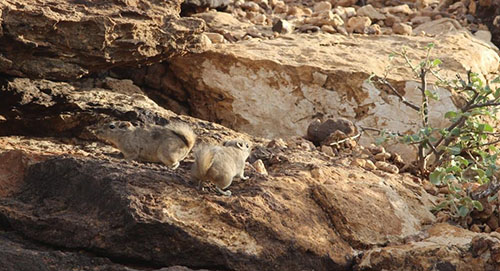 |
|||||
Pectinator spekei (a female and a juvenile) in the Ali Sabieh region (Djibouti). |
|||||
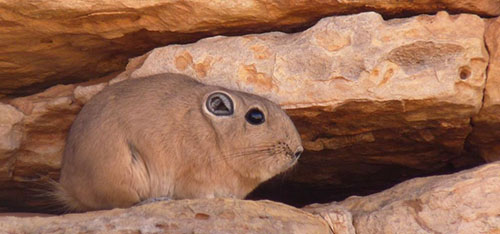 |
|||||
Massoutiera mzabi in the Djabal Sawda (Libya). |
|||||
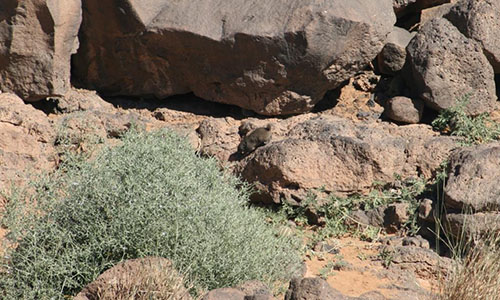 |
|||||
Massoutiera mzabi (a lactating female) in the Al Harruj Al Aswab moutain in Libya. Notice the uniform dark brown fur. |
|||||